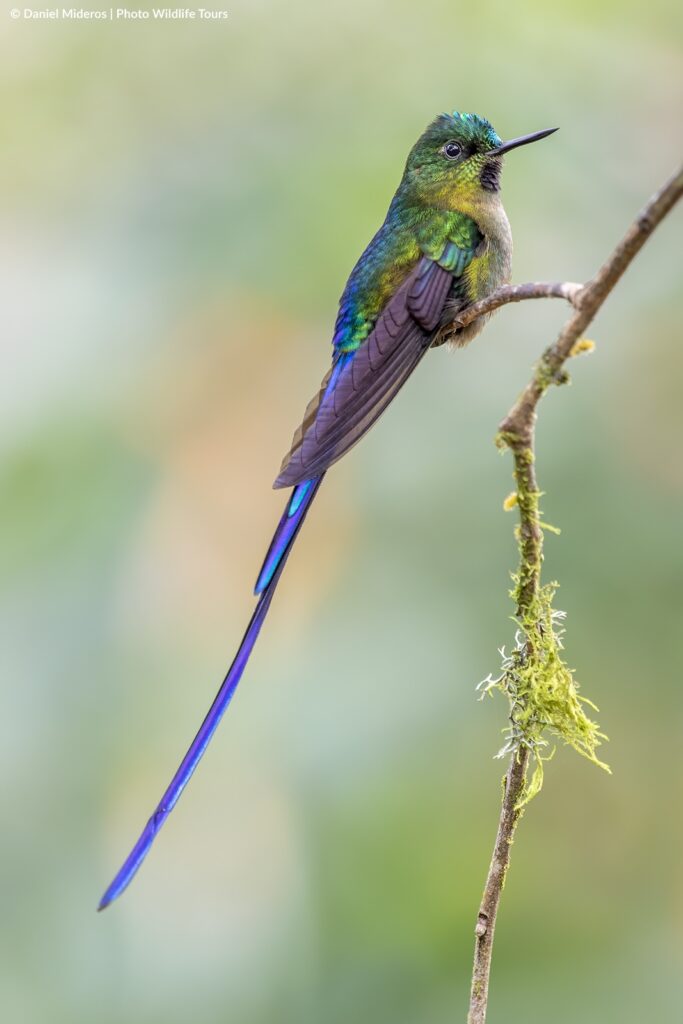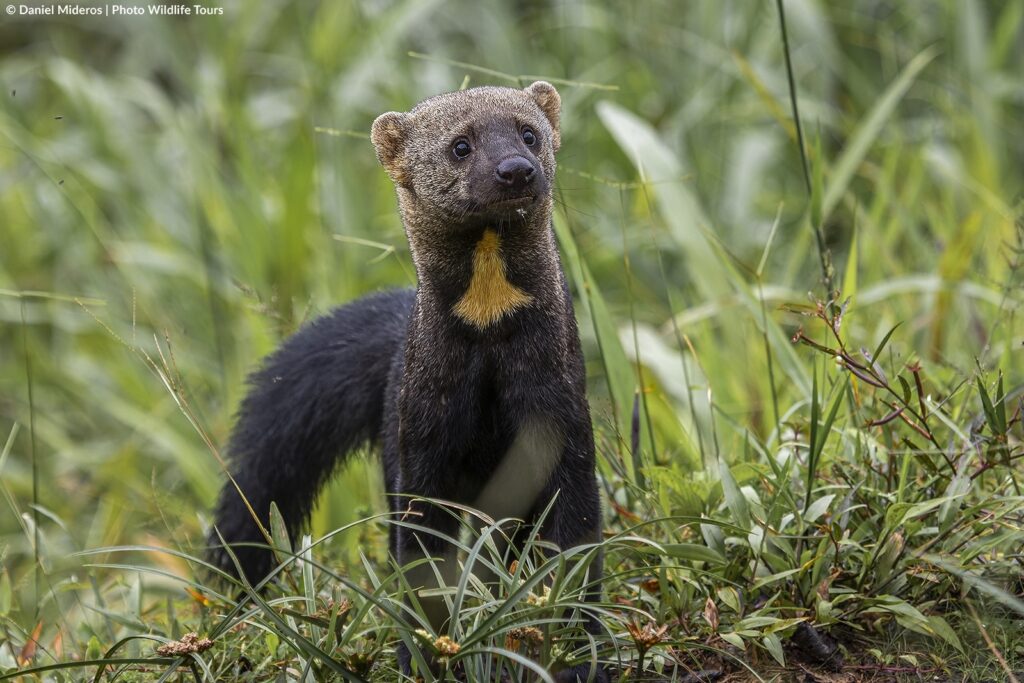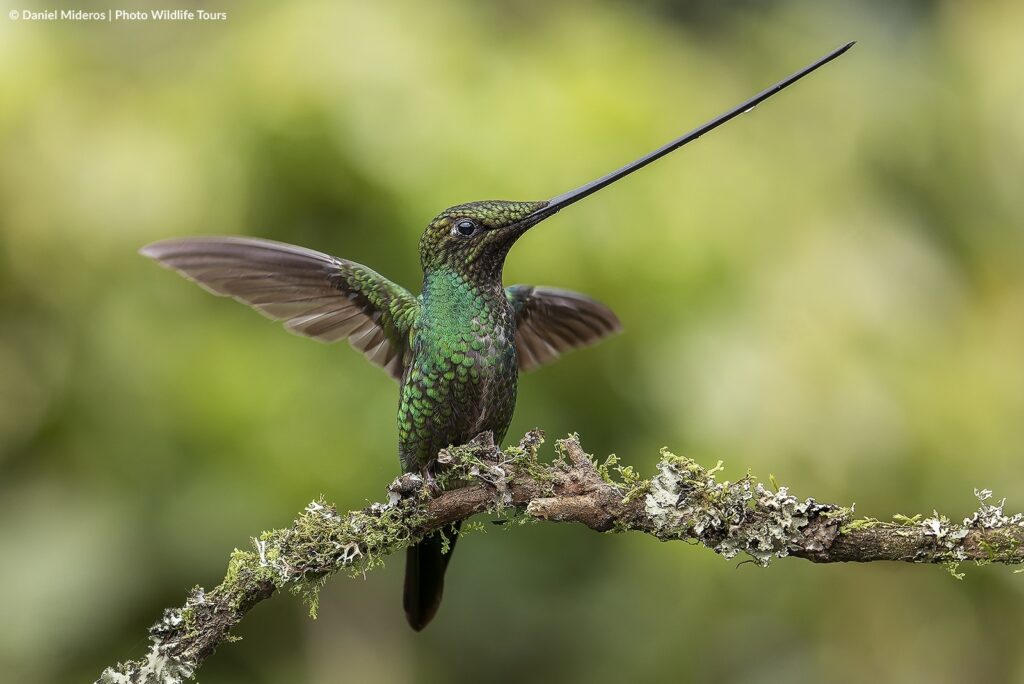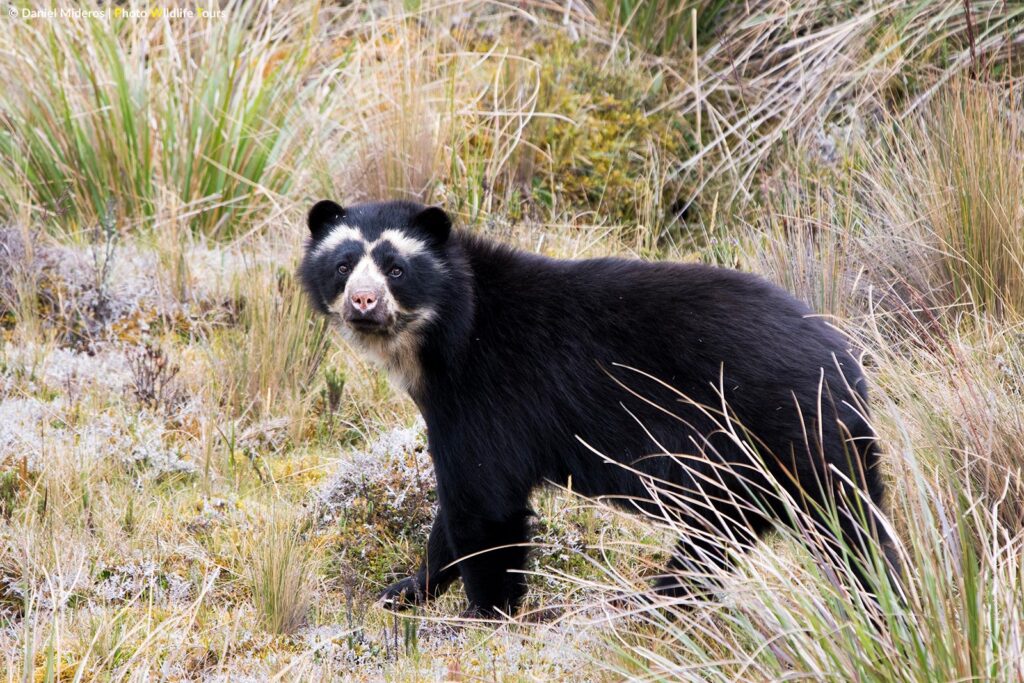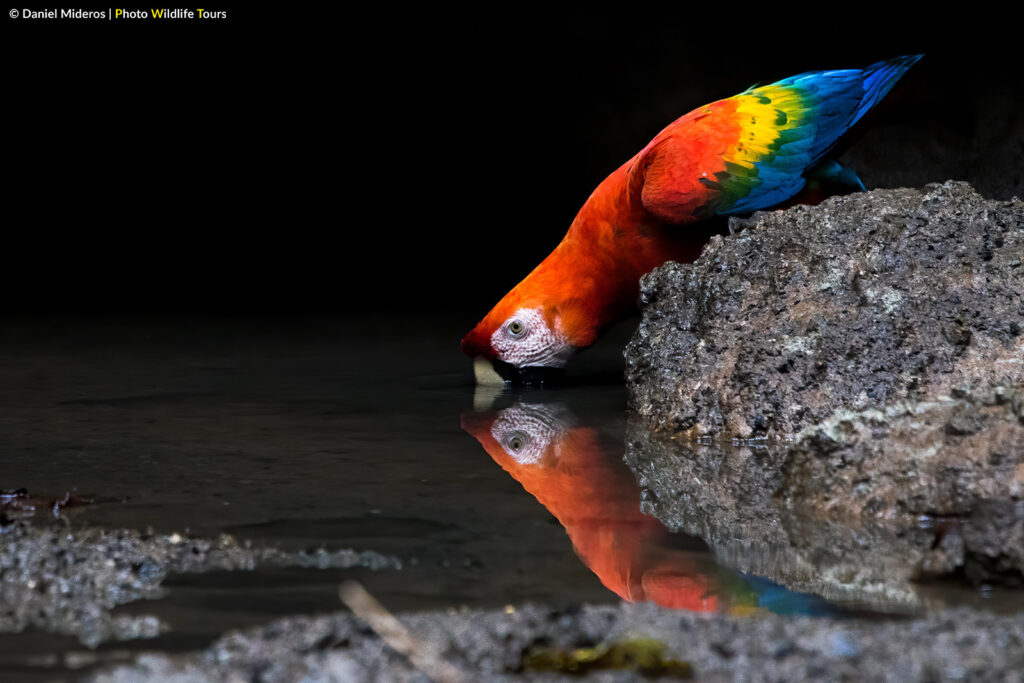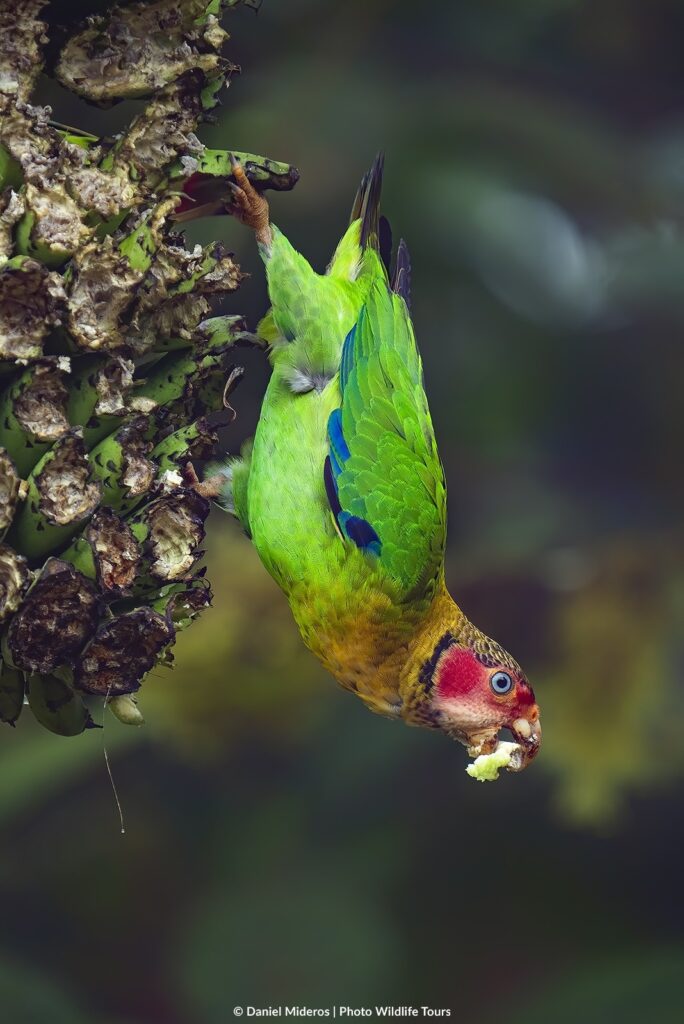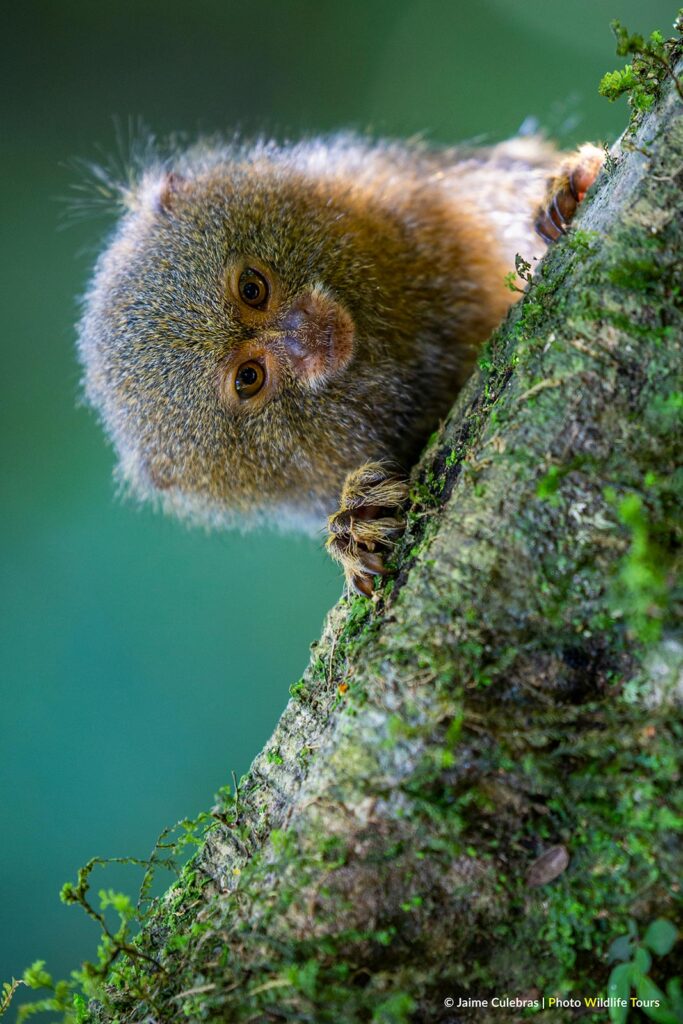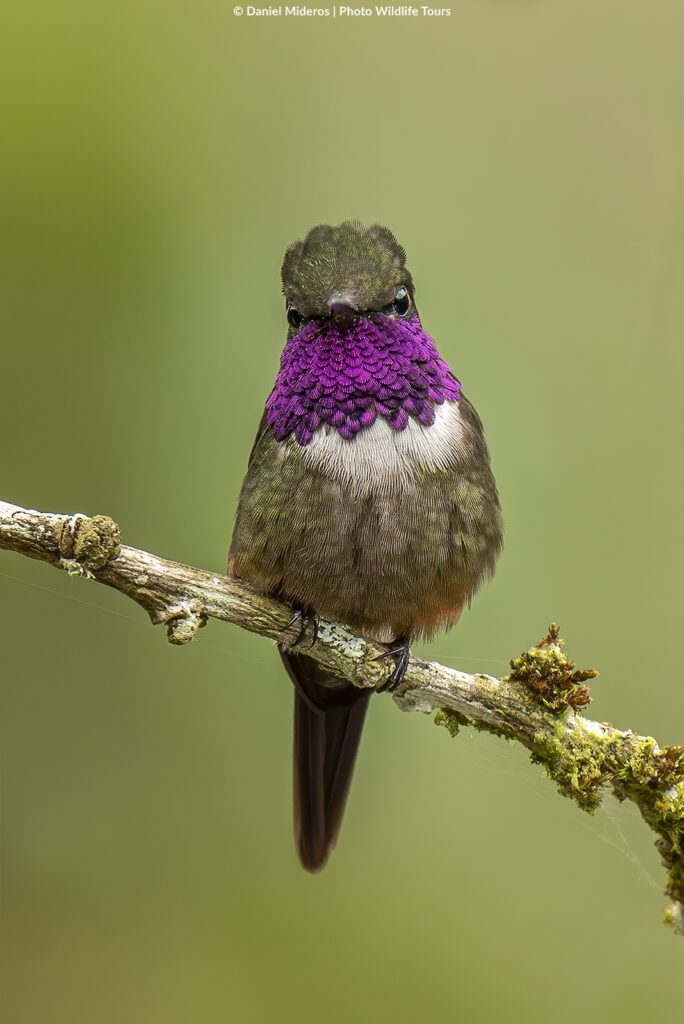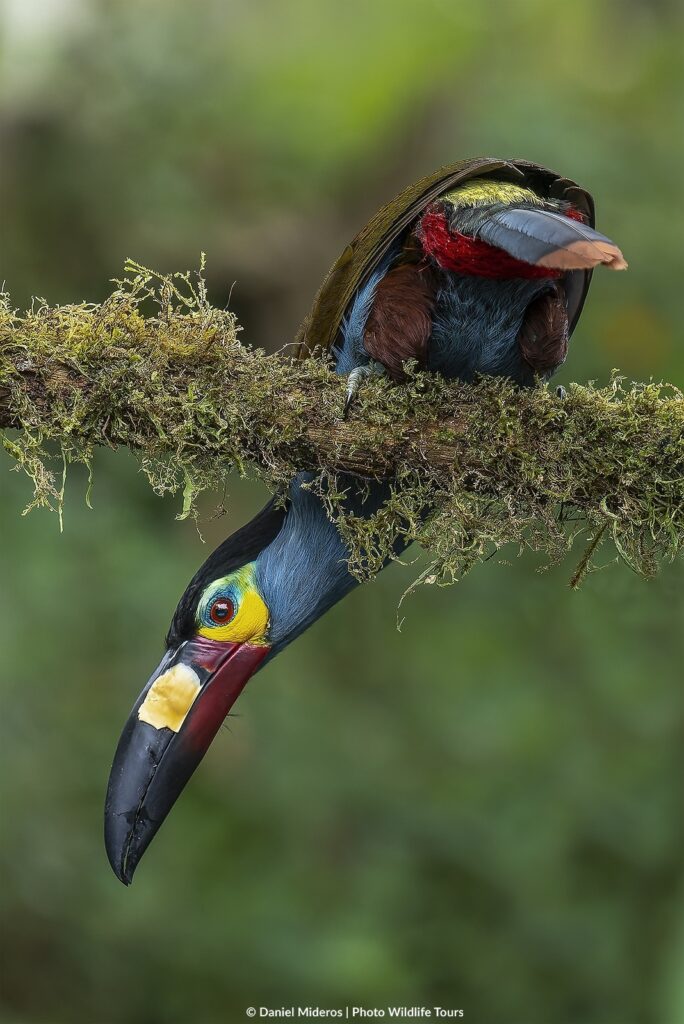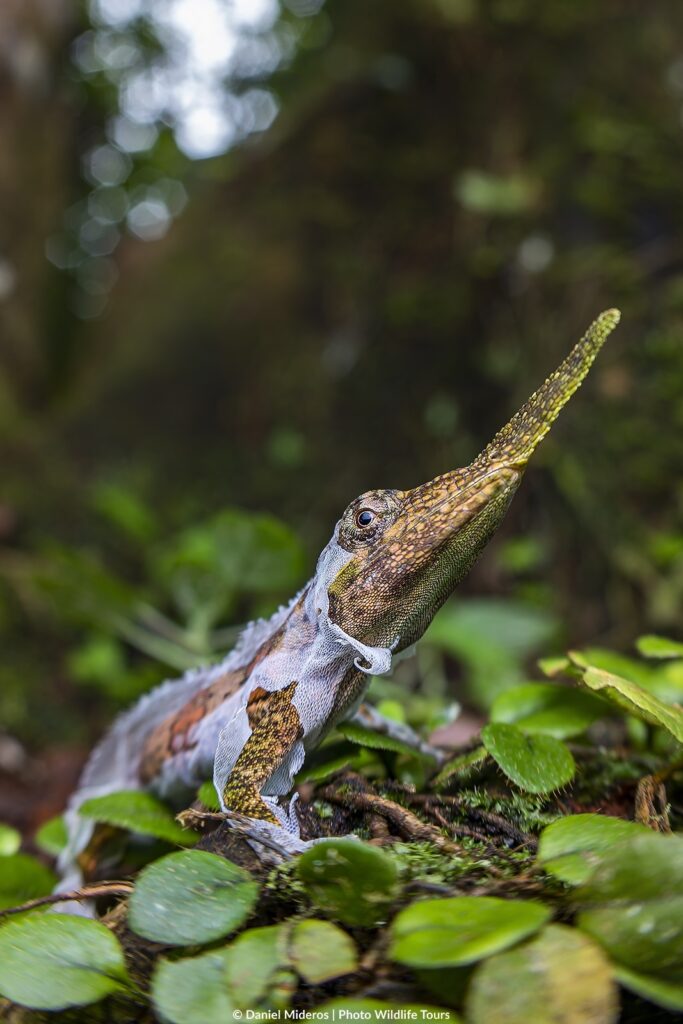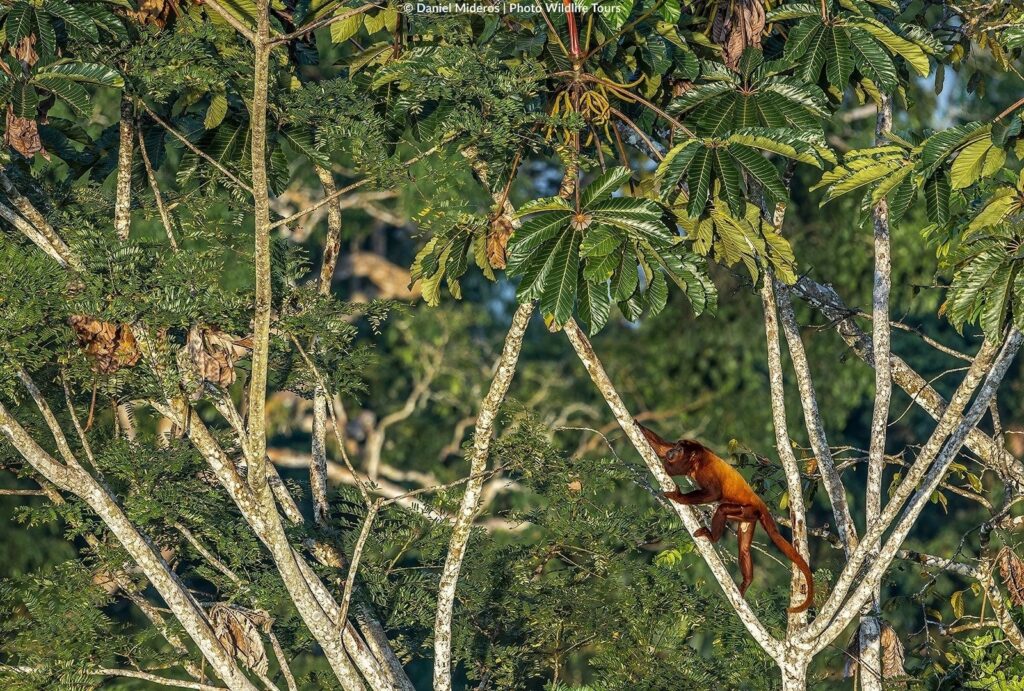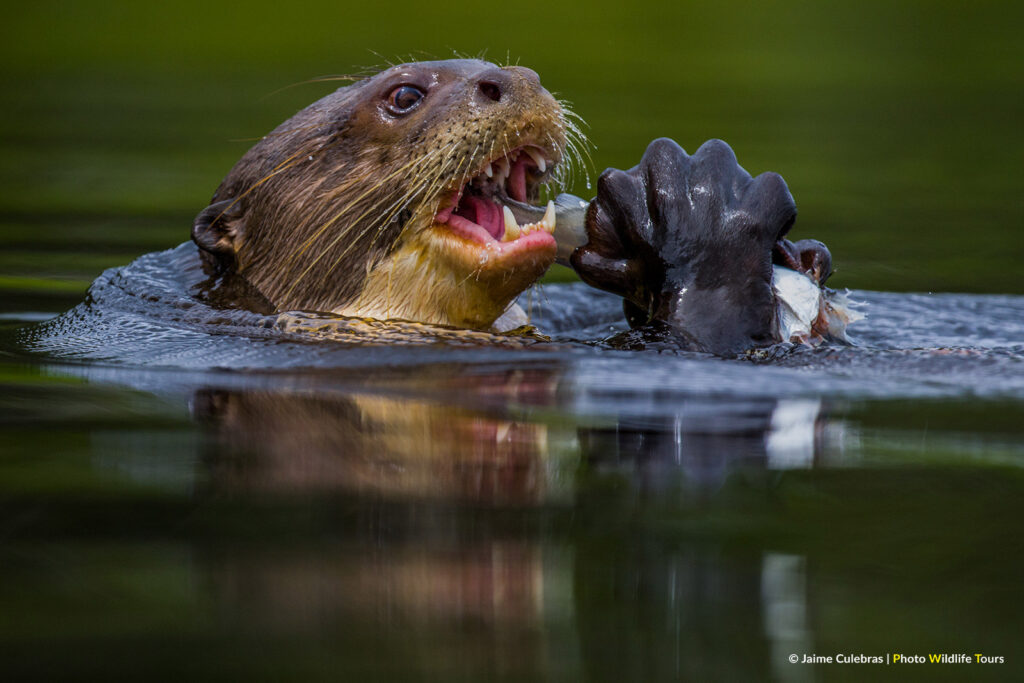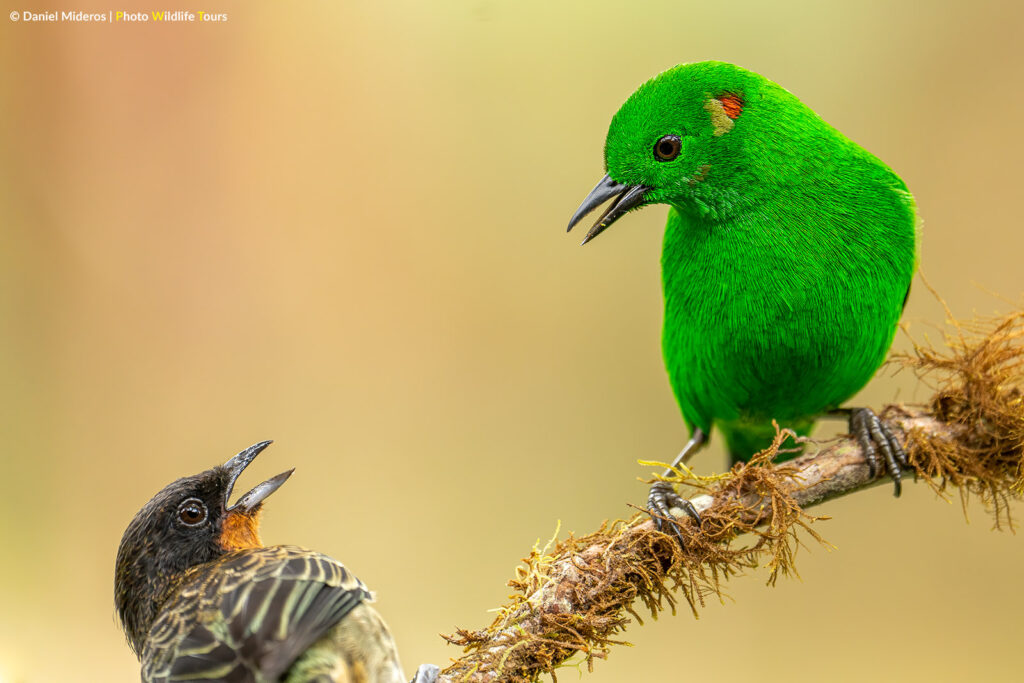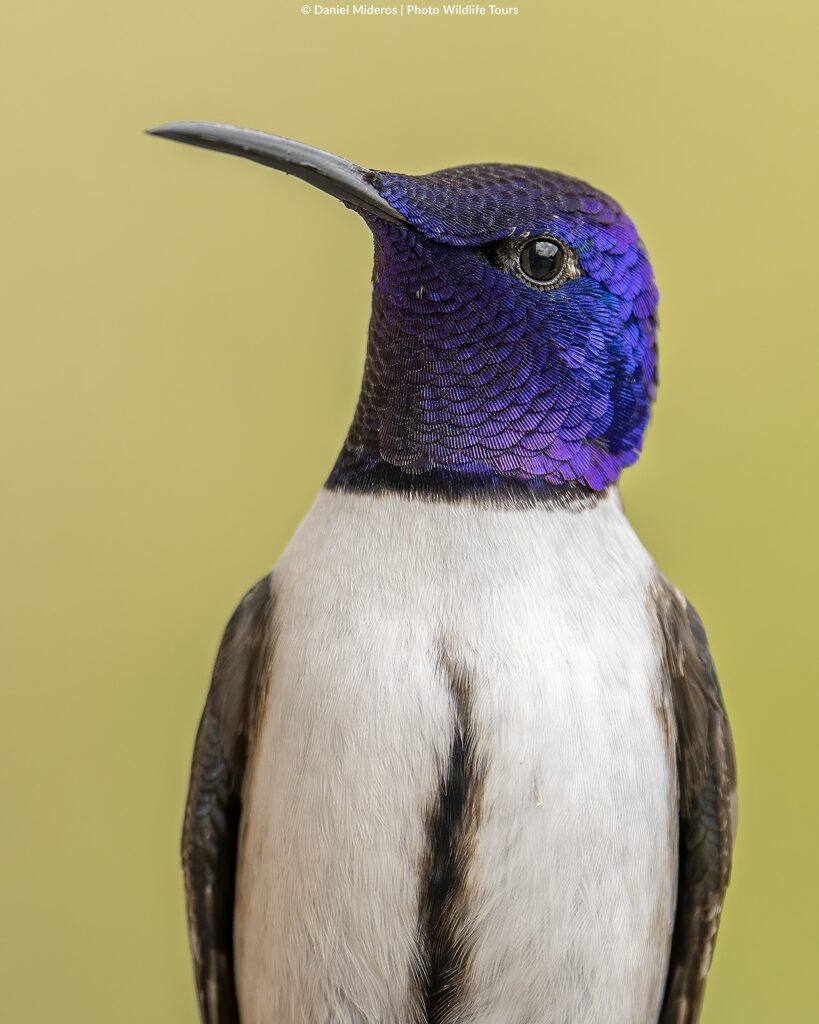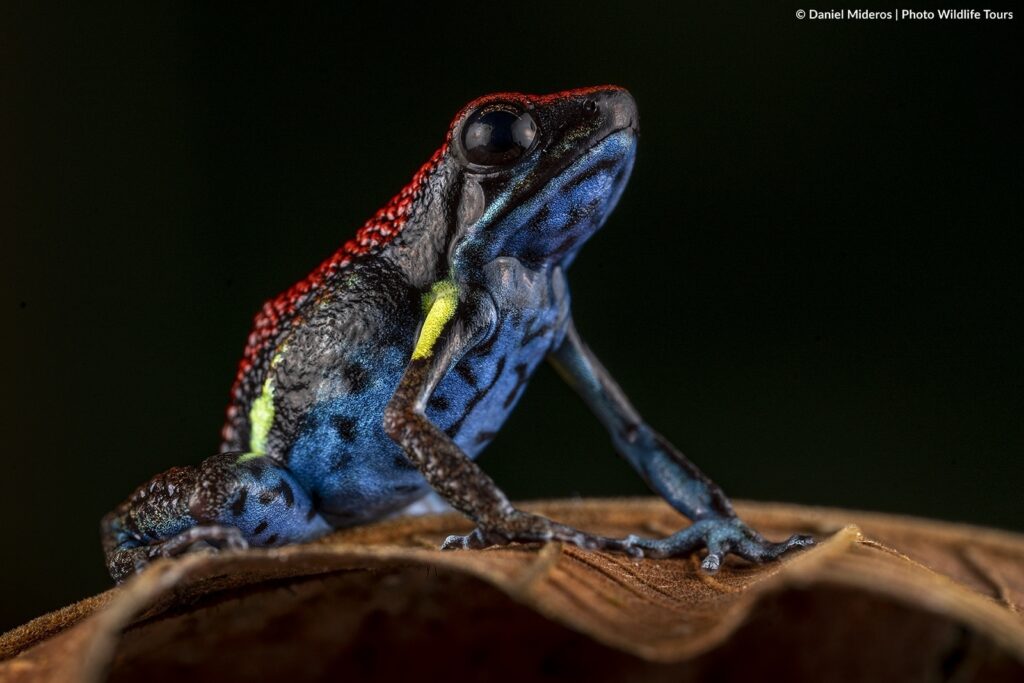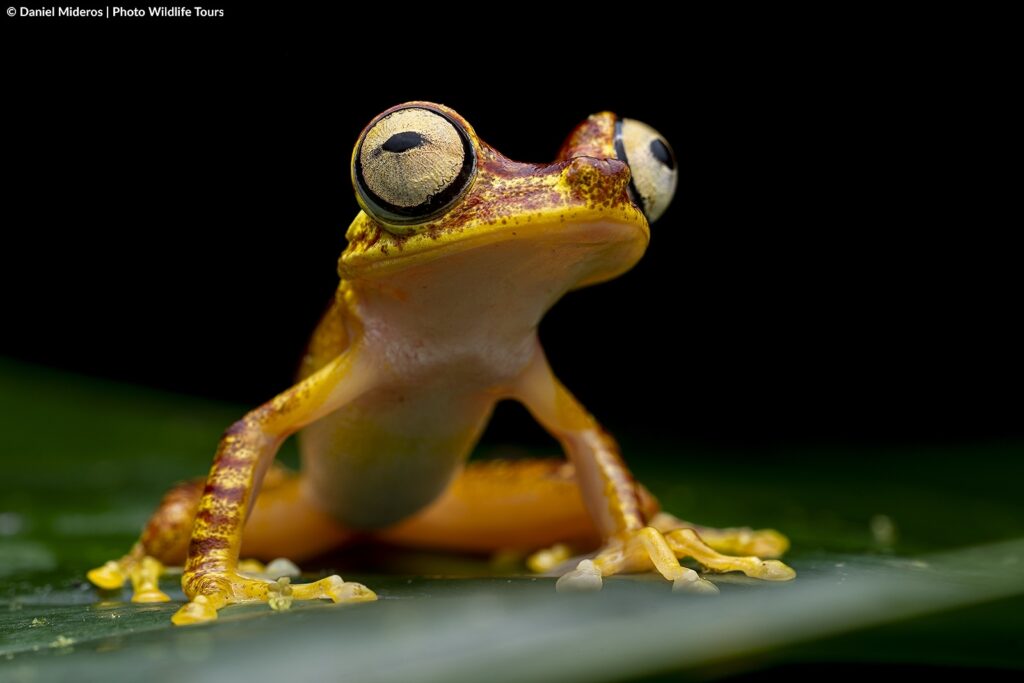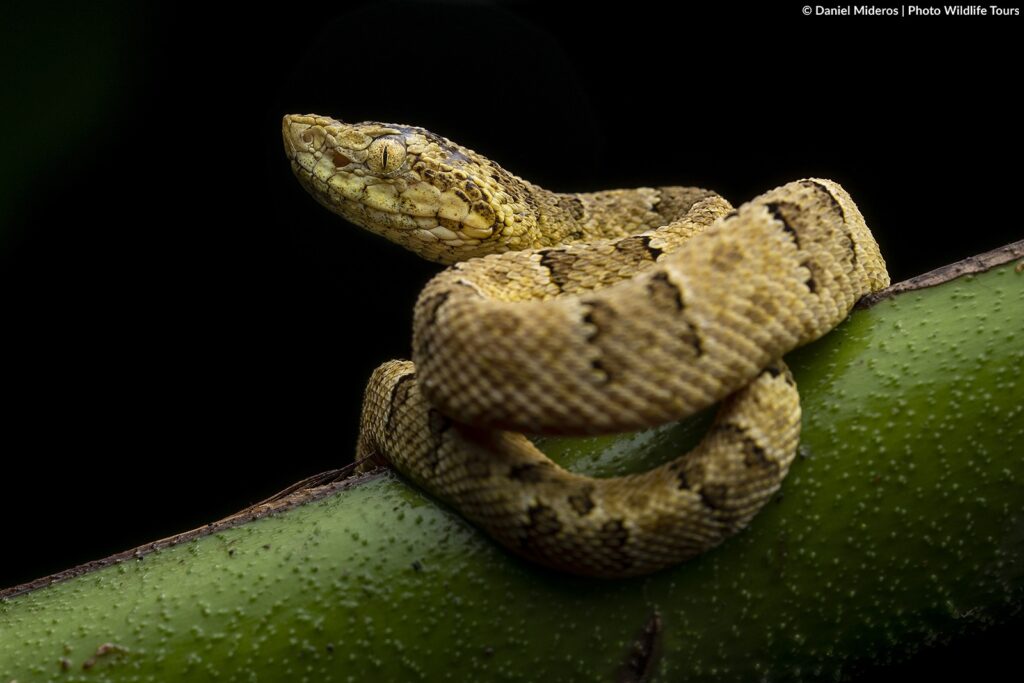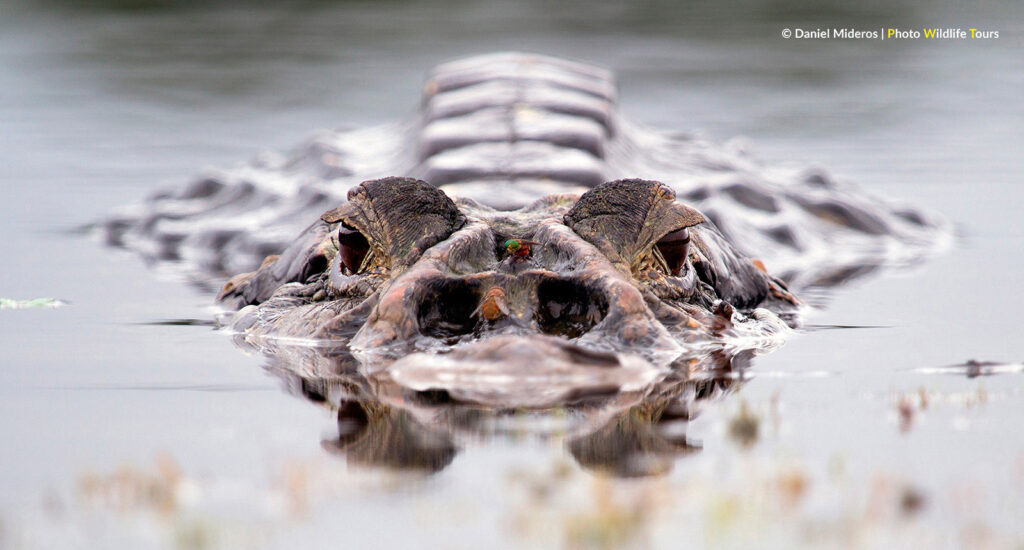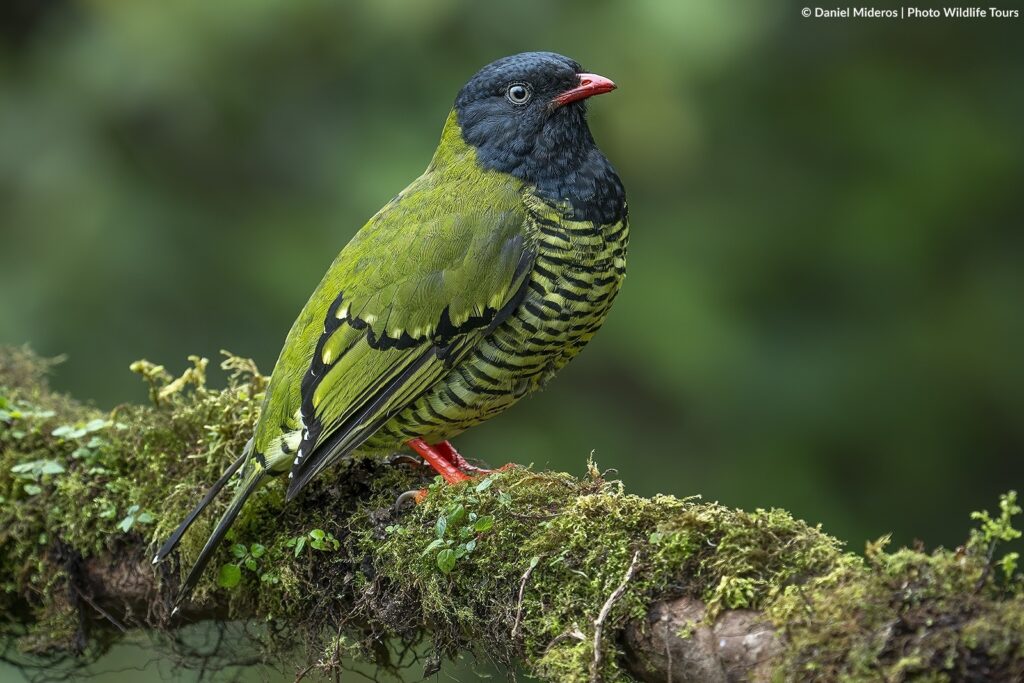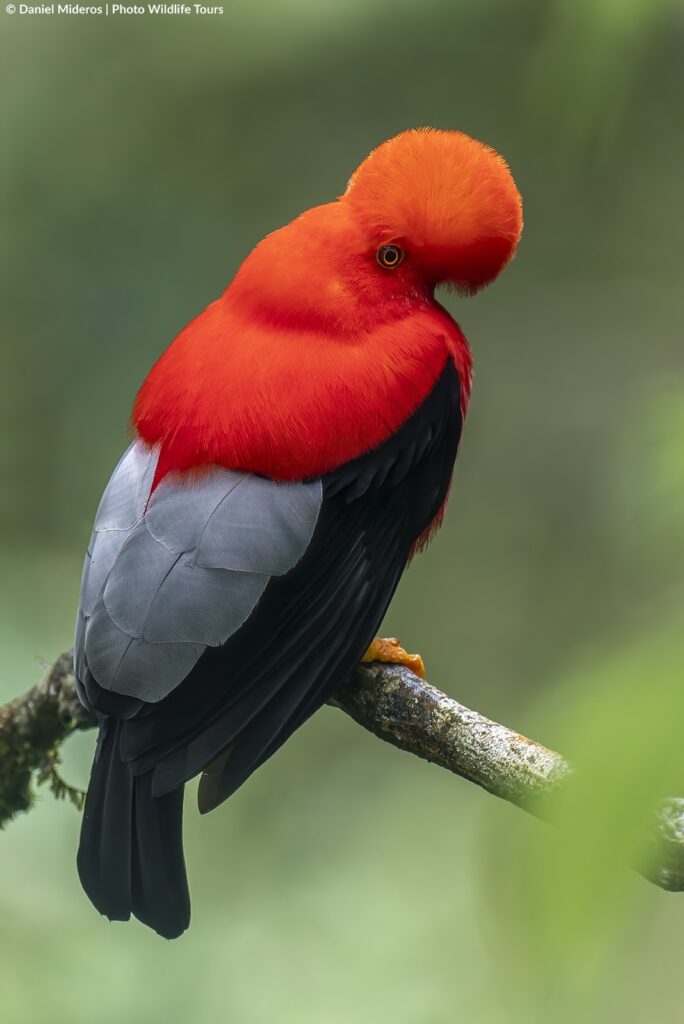About the Tour
We are, without a doubt, in one of the most biodiverse areas of the planet, Ecuador, country of the four worlds; a place where on the same day you can wake up accompanied by magical flutters of dozens of hummingbirds from the Andean forests and end the day accompanied by spectacular sunsets of the giant Amazonian forest, whose canopy shelters unimaginable life forms.
We will travel through a universe of opportunities to take full advantage of our cameras on this Ecuador photography tour.
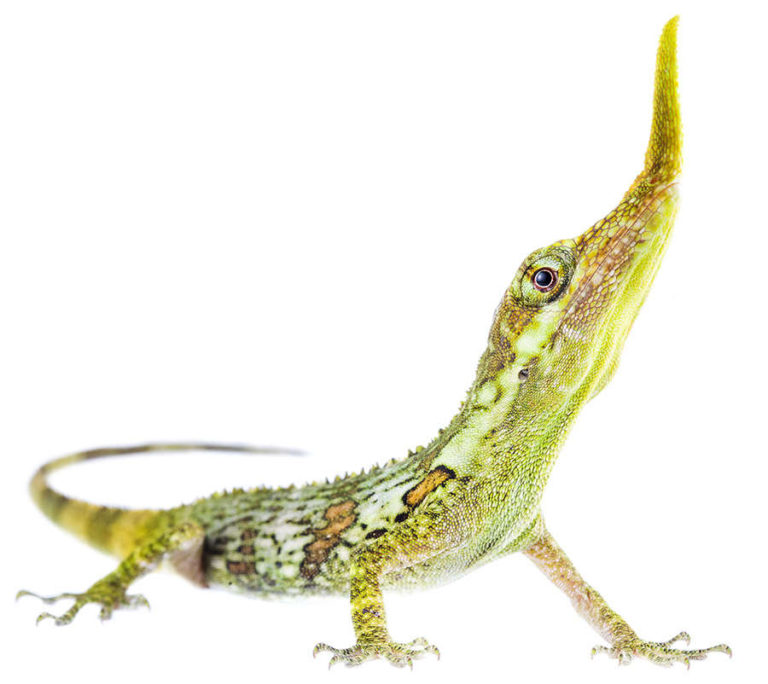
Date
April 22th-May 3th, 2024 (Sold Out)
Activity level
Moderate
Available spaces
6
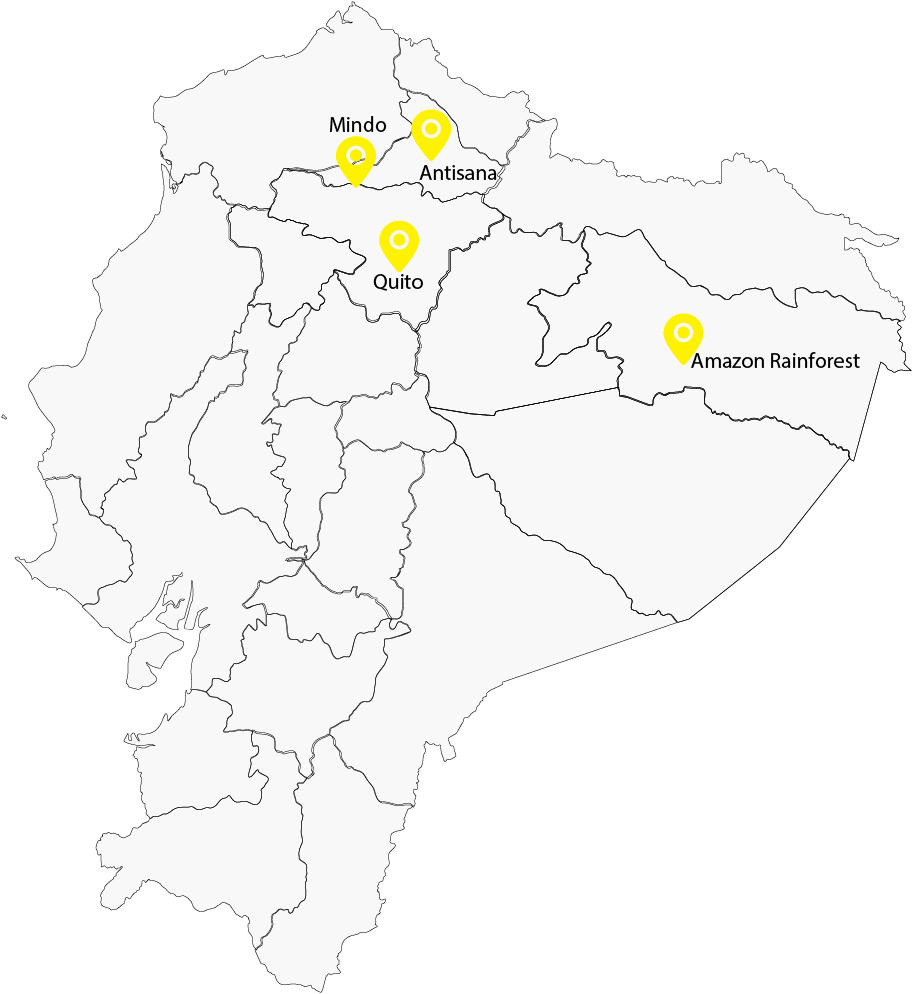
Itinerary
Day 1: Quito Arrival
Today we will arrive at our hotel located in the valley of Puembo, near Mariscal Sucre International Airport and the capital city, Quito.
In the evening we will have a welcome dinner where we will meet all the participants, we will introduce ourselves and we will have a short meeting in which we will inform about the activities of the following days.
Day 2: Cloud Forest (highlands)
Early in the morning (6am) we will embark on our trip to the high cloud forest area.
We will make our first stop in the parish of Nono, where we will seek, within a hide, to photograph the emblematic antpitta birds, among which are Chestnut-naped antpitta (Grallaria nuchalis), Ecuatorial antpitta (Grallaria saturata). Then we will looking for an owl that lives inside the forest, White-throated screech owl (Megascops albogularis). And of course, the air dancers, the hummingbirds, among which we have: the famous Sword-billed hummingbird (Ensifera ensifera), Mountain Velvetbreast (Lafresnaya lafresnayi, Black-tailed trainbearer (Lesbia victoriae), Sapphire-vented puffleg (Eriocnemis luciani), and around 10 more species.
If we are lucky, sometimes the Barred fruiteater (Pipreola arcuata) usually arrives.
After lunch, we will descend to the Nanegalito zone, as we will be stopping at a place with a very high diversity of hummingbirds (up to 23 species have been counted). Here, we can get very beautiful pictures of hummingbirds perched, among which we have, Purple-throated woodstar (Philodice mitchellii), Fawn-breasted brilliant (Heliodoxa rubinoides), Andean emerald (Uranomitra franciae), Sparkling violetear (Colibri coruscans), Green-crowned Woodnymph (Crowned Woodnymph), among others.
Sometimes oropendola, saltators, woodpeckers and tanagers usually arrive at the feeders. Here, our goal will be the Blue-necked tanager (Stilpnia cyanicollis), which is a spectacle of colors.
Day 3: Cloud Forest
In the morning we will go to a hiding place or “hide”, where we will look to make images of the Masked Trogon (Trogon personatus), Rufous motmot (Baryphthengus martii), sometimes it usually comes Barred forest falcon (Micrastur ruficollis), and if luck is with us, the famous Long-wattled umbrellabird (cephalopterus penduliger).
After breakfast we will go to a reserve to photograph the colorful Plate-billed mountain toucan (Andigena laminirostris), Toucan barbet (Semnornis ramphastinus).
Additionally, this reserve is excellent for tanagers, among which we can photograph: Flame-faced tanager (Tangara parzudakii), Golden tanager (Tangara arthus), Blue-capped tanager (Sporathraupis cyanocephala), Black-capped tanager (Stilpnia heinei), Golden-naped tanager (Chalcothraupis ruficervix), Blue-winged mountain tanager (Anisognathus somptuosus), among others.
As in the entire cloud forest, hummingbirds also have their role, here we will focus on: Empress brilliant (Heliodoxa imperatrix), Green Violet-ears (Colibri thalassinus), Gorgeted sunangel (Heliangelus strophianus). Around 7-9 species of hummingbirds can be found here.
At night we will do some macro photography, we will look for the famous Pinocchio lizard (Anolis proboscis). Also, the Equatorial Anole lizard (Anolis aequatorialis), Andes Anole lizard (Anolis gemmosus), Babbling Torrenteer frog (Hyloscirtus alytolylax), Red spotted glass frog (Nymphargus grandisonae), among others.
Day 4: Choco Foothills
After breakfast we will go to a transition zone between the Cloud Forest with the biodiverse Chocó Forest (1,700 to 750 meters above sea level), where we will look for birds such as the Glistening-greed Tanager (Chlorochrysa phoenicotis), Moss-backed tanager (Bangsia edwardsi), Black-chinned mountain tanager (Anisognathus notabilis), Orange-breasted fruiteater (Pipreola jucunda), Golden-collared Honeycreeper (Iridophanes pulcherrimus), Crimson-rumped toucanet (Aulacorhynchus haematopygus), Rose-faced Parrot (Pyrilia pulchra), among others
After lunch we will looking for one of the most iconic birds of the cloud forest and the world, the Cock-of-the-rock (Rupicola peruviana). The males concentrate in places called “Lek”, where, in a duel of songs and dances, they court the females.
Day 5: Cloud Forest
In the morning we will go to another reserve to photograph the Metallic-green tanager (Tangara labradorides), Beryl-spangled tanager (Tangara nigroviridis) and the Ocellated Tapaculo (Acropternis orthonyx).
In the afternoon we are going to return to our hotel for a rest, or, for those who still have energy, we can do multi-flash to: Violet-tailed Sylph (Aglaiocercus coelestis), Booted racket-tail (Ocreatus underwoodii), Velvet-purple coronet (Boissonneaua jardini), and around 7 more species.
At night we will go to a place where we will look for one of the most beautiful frogs in the world, the Imbabura tree frog (Boana picturata), Enyalioides oshaughnessyi lizard, and Espadarana prosoblepon glass frog, and one or another snake.
Day 6: Toucans and Quito
After breakfast, we will go to another place where we will take our last photographs of the Cloud Forest and its beautiful species, we will be able to observe the Pale-mandibled Aracari (Pteroglossus erythropygius), Choco toucan (Ramphastos brevis), Yellow-throated Toucan (Ramphastos ambiguous), Green honeycreeper (Chlorophanes spiza), Red-headed barbet (Eubucco bourcierii).
The reserve is also home to a super predator, the Tayra (Eira barbara)
Once we finish our photos, we will start our trip to the capital of the country, Quito.
*On the way we will make a stop to photograph white-bellied woodstar (Chaetocercus mulsant).
Day 7: Antisana Ecological Reserve
We start the day from Quito to the Antisana Ecological Reserve.
In the morning we will go to the “Iscos” to try to photograph the Andean condor (Vultur gryphus) who is flying over the valleys.
In addition, our objective will be to photograph the Carunculated Caracara (Phalcoboenus carunculatus), nice raptors with colorful faces and mottled vest. Also the Black-faced Ibis (Theristicus melanopis), very long-beaked birds that, unlike Caracara, are not as friendly to humans.
In this area is the Giant Hummingbird (Patagona gigas), the largest in the world! Also, the famous Ecuadorian hillstar (Orotrochirus chimborazo)
If we are lucky, in this area it is possible to see the Spectacled bear (Tremarctos ornatus).
Day 8: Amazon Rainforest
We will fly for about 45 minutes from Quito to Coca (Francisco de Orellana), piercing through the oriental Andean mountain range.
In Coca, we will board on comfortable covered canoes. We will navigate for about two and a half hours, admiring the beautiful view and occasional animals of the basin of the Napo river, as well as enjoying a delicious snack. Later, we will disembark from our motorized canoes and board quillas, which are smaller canoes made from tree trunks and skillfully maneuvered by our local guides. Rowing prevents us from scaring the animals, and therefore we will be able to appreciate them up close.
Once we arrive to the majestic Añangucocha lake, our lodge will finally be visible. After we disembark, our hosts will welcome us with refreshing drinks and then guide us to the comfort of our cabins.
In the afternoon we will go to the observation tower to photograph the sunset, in addition to some species of toucans, like White-throated Toucan (Ramphastos tucanus), Black-faced dacnis (Dacnis lineata), Turquoise tanager (Tangara mexicana), Many-banded araçari (Pteroglossus pluricinctus), among others.
Day 9: Amazon Rainforest
With the sun rising on the horizon, we will get ready to travel towards the parrot clay lick; a place where our cameras will witness one of the most beautifully colorful natural performances of the Amazon. With silence and patience we will await for dozens of parrots of varying species to descend upon the ground for the first meal of the day.
In these strategic spots we will be able to observe about 11 species of parrots and parakeets and, during certain seasons, we may even identify Scarlet macaw (Ara macao).
After lunch, we will explore the forest in search of different species of monkeys (Woolly Monkey, Squirrel Monkey, Large-headed Capuchin, White-fronted Capuchin, Saki Monkey, Golden-mantled Tamarin, White-bellied Spider Monkey, Red Howler Monkey). With luck, we will be able to spot a couple of species, as well as capture beautiful takes of the forest.
At night we will do herping, we are going to looking for monkey frogs, the Ecuadorian poison frog, snakes, boas, etc.
Day 10: Amazon Rainforest
After breakfast, we will navigate on canoes once more in search of the Black Caiman (Melanosuchus niger), an animal whose length can exceed 5 meters (16 ft). We will try to capture photographs from different perspectives.
Another reason for navigating this lake is to capture one of the most endearing predators of the Amazon, the Giant Otter (Pteronura brasiliensis), also known as River Wolves. They tend to be quite trusting and, if we are lucky, they might even approach the canoe.
In the afternoon, we will search for birds, insects and other small species and, with any luck, we will be visited by otters and caimans. By the end of the day, we will be able to appreciate the spectacular view of the sunset from the tower of the hotel.
Day 11: Amazon Rainforest - Quito
We will depart from the hotel early in the morning, navigating through the black river until we arrive to the junction with the Napo river. On our returning journey, there is a possibility we may encounter otters, monkeys and exotic birds. When we arrive to the port, we recommend using the restroom before embarking on our canoe, since our trip will be two hours long.
Our return flight from Coca to Quito will be announced according to the itinerary arranged by the airline.
In the evening we will have a small farewell dinner.
Day 12: Departure Day
Eleven fascinating and amusing days will be saved in photographs. These will serve as evidence of our time together in a place where biodiversity has no limits.
It is time to say, “see you soon.” We trust that we will be able to share another adventure together.
After a comfortable rest and a delicious breakfast we are ready to return to our homes.
Please check flight times.
Featured sightings
USD 4,900
Included
- Double accommodation to share.
- All meals (except dinners in Quito).
- Expert photographer guide.
- Internal flights Quito – Coca – Quito.
- Private transportation.
- River boat (Amazon).
- Multi-flash.
- Reserves fee.
- Apply supplement for single room.
Not included
- International air tickets and airport taxes.
- Additional nights.
- Alcoholic beverages, snacks and beverages that are not part of the meals.
- Laundry service.
- Personal expenses.
- Travel insurance (we recommend having one)
- Tips.
- Any other service not specified in the document.
General tips
For a better experience, it is important to know a couple of factors which will facilitate your stay in Ecuador:
- If you’d like to take home a couple of souvenirs, we recommend bringing a little extra cash in order to acquire these at the different locations we will be staying at (Ecuador’s currency is the US dollar). Most places only take cash. We recommend bringing small bills or coins, as most places do not accepts bills larger than $20.
- The tropical regions have a lot of mosquitos, so bringing mosquito repellent is very important.
- Sunblock.
- Hats.
- Flashlight (a headlamp is preferable).
- Bags to store wet clothes.
- Water bottle.
Photographic equipment
As photographers, we know how difficult it is to decide how much equipment to take on trips, as we always want to take all of our equipment with us so that we can take advantage of our experiences. Here is a list of equipment we recommend bringing:
- Macro lens
- Wide angle lens
- Zoom lens, range 100-600
- Equipment protector for the rain
- Tripod
- Flash
- Difusors
- Batteries
- Battery chargers
- Cleaning equipment
- Plug adaptor
Clothing
We will experience three types of climates.
In the first part of the trip, in the cloud forest region, we will have a mild climate and sometimes cold nights.
On the second route, in the Antisana Ecological Reserve, located in the Andean region that is above 3000 m.a.s.l. there will be cold currents, so it is important to wear warm and waterproof clothing.
For our last destination, the Amazon region of hot and humid weather, we recommend bringing long pants, shirts or long-sleeved shirts and a lightweight material that help perspire less and avoid mosquitoes that can be quite annoying, since the region is between 100 and 800 meters above sea level.
tour leader
He graduated in advertising career at the San Francisco de Quito University.
He worked on his career until 2017, since then he made the decision to live from his passion, nature photography. In the same year he started his own business, Photo Wildlife Tours, in which it is dedicated to wildlife photography tours, and conservation. In addition to other audiovisual projects.
In the year 2022 he became the first Ecuadorian to win a category of Wildlife Photographer of the Year, “Animals in their environment”
Book your Spot!
- 593 98 904 9567
- [email protected]
- Quito - Ecuador
